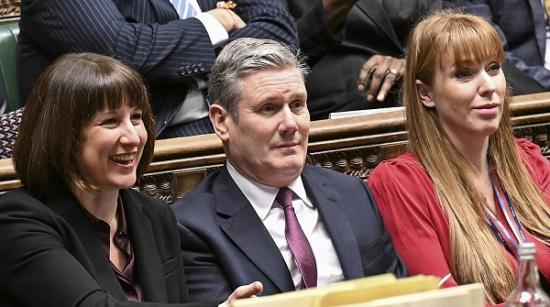Economists Have Urged Rachel Reeves To Loosen The Purse Strings - Here's Why It's Not That Easy
20th September 2024

A group of economists has publicly urged chancellor Rachel Reeves to reverse her stance on public investment, and relax the Treasury rules that constrain it. They argue in a letter to the Financial Times that low investment is the root cause of Britain's productivity stagnation, and that the government must invest more to enable private businesses to step up their own efforts.
By investment, they mean spending on assets that enable people to produce more and boost future income. These include infrastructure (such as clean energy and transport networks), and skills and research that lower private producers' costs and give them new profit opportunities.
Led by former cabinet secretary Lord (Gus) O'Donnell, the dissenting group wants Reeves to overturn spending plans inherited from the previous government, in which public investment rises much more slowly than general prices over the next five years. This real-terms reduction threatens to squeeze central and local government capital budgets as fiercely as in the austerity years from 2010-2019.
Top civil servants have reportedly told Reeves that the required scale of cuts is not achievable. But reversing this stance in the budget on October 30 will not be easy.
Putting public investment on a new expansion path would require a break from the present fiscal rules. These require the budget deficit to fall below 3% of gross domestic product (GDP), half its present level, and public debt to be declining in relation to GDP within five years.
Reeves is unlikely to be troubled by the deficit rule, having already said that she will apply it only to public sector net borrowing. This excludes loans for public investment, confining the squeeze to borrowing for the government's current expenses.
But her hands are still tied by the second rule, since the measure of public debt that must be reined in does not exempt borrowing that might boost the economy and generate a return for the public purse.
The Office for Budget Responsibility's latest assessment shows public debt eventually becoming unsustainable. This is due to expenditure rising from 45% of GDP (in the March 2024 plans) to near 60% in 2075, while revenue stays level at around 40%.
A shift of public spending towards investment could lessen this projected gloom, by potentially making GDP grow faster. Raising people's productivity by giving them better skills and equipment to work with is the only way to keep national output rising, when the working-age population ceases to grow due to low birth rates and proposed immigration curbs.
Research by the economists who signed the FT letter supports their case that more public investment will pay for itself. Among them, model simulations by former Cabinet Office chief economist Jonathan Portes suggest that a boost to public infrastructure spending would generate income and tax revenue that more than repays the initial rise in borrowing. That would make public debt reduction over the longer-term easier to achieve.
The public productivity challenge
But there have already been cautionary replies from other prominent economists. Among the first was former Shell and British Airways chief economist DeAnne Julius, pointing out that increased investment in the public sector is likely to disappoint unless accompanied by measures to boost its productivity.
She cites the NHS and transport as sectors where the government, having conceded large pay rises, won't get any performance improvement unless the money brings extra workforce productivity. Public spending isn't investment unless it generates a future stream of additional output and taxable income.
Public sector productivity is notoriously hard to raise. This is often blamed on bureaucratic management and the absence of competition or shareholder pressure to spur greater efficiency. But 40 years of privatising or contracting out services to private providers has rarely achieved a rise in output per employee without eroding service quality.
The bigger problem is that most public services are necessarily person-centred. Doctors, surgeons, teachers, care workers, police officers, judges, tax and benefit assessors are already working with as many clients and cases as they can manage. Online consultations haven't greatly improved their productivity, and the potential for artificial intelligence to do so is still years away.
The last Labour government expanded the health and education budgets while staying within Treasury rules only because of an unusual revenue boom, drawn especially from the financial sector. It was noticeably less successful at boosting the efficiency of these services. That boom ended in a credit crunch from which private and public sector productivity growth has yet to recover.
The new government has already launched an ambitious plan for building homes and new towns, which will soak up a lot of the spare labour and materials in the construction sector. It is wary of repeating the experience of September 2022 when Liz Truss’s announcement of a more ambitious growth plan, fuelled by wider deficits, sparked a sell-off of government debt and a jump in interest rates.
The interest the government pays on new long-term borrowing is still above 4%, setting a hurdle rate that publicly funded projects must achieve to keep the budget on a sustainable path as currently defined.
If there was a golden era for governments to borrow more for investment it was in 2010-22, when debt could be issued at near-zero interest rates. That is why Rachel Reeves will be cautious in accepting calls for a sharp rise in public investment. She will want to ensure any new spending improves productivity and offers real value for the public purse.
Author
Alan Shipman
Senior Lecturer in Economics, The Open University
Note
This article is from The Conversation web site. To read it with links to more information go HERE
